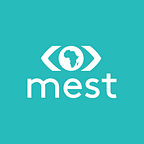A Word to Recruiters During COVID-19
This post was written by MEST’s Head of Recruitment, Tobi Lafinhan.
We are in very peculiar times. Businesses across the world are already cutting down on expenses to increase cash-flows and extend their runways. Amidst this pruning, hiring appears to be one of the things that have certainly been put on hold.
However, as a recruiter, this does not necessarily mean that there is no work left to be done. For example at MEST, a large part of our recruitment process already happens remotely due to the nature of our program, as we interview candidates from across the continent right from our base in Accra, Ghana.
This means things like reviewing applications, phone interviews, and more can still be conducted remotely if you happen to still be hiring. On that note, you can go ahead to check out this resource on how to re-design your recruitment process and run a large part (if not all of it), remotely.
Otherwise, if you are in a season where some/all forms of talent acquisition have been put on hold, then as a recruiter, one question I believe might be on your mind right now, is what next?
Depending on how long the social-distancing and lockdown policies last for, I think it is highly unlikely that things will go back to “normal”. This, therefore, feels like a good time for recruiters and other teams in the talent acquisition space who have been very traditional about their approach, to use this period to put certain systems and processes in place.
These processes should be ones that help you take full advantage of technology and what is available to us today, to scale your team’s capabilities and reduce certain types of human capital costs that typically come with traditional recruitment practices.
Some things you can take a look at are:
1. Re-assessing the state of talent within your organisation (the skills on your team, the skills-gap that exist, where growth might be required, the diversity, etc.)
A good way to kick this process off is by asking the right questions. Questions like: What is working right now and what needs to change in the near future? What are the values and desired outcomes that will guide the organisation in these times?
Answering these questions requires a self-critical review of your company strengths, weaknesses and opportunities. You can find more helpful tips in the article here.
2. Looking toward new talent pools (industry-wise, geographically, etc.)
As the state of different economies affected by this pandemic begins to unfold, some of your typical talent pools might begin to dwindle. This is where you can borrow tips from the Six Paths Framework in formulating Blue Ocen Strategy. The essential idea here is to break away from the norm and see what opportunities exist outside how you’ve always done things. A good example from MEST is at the start, we mainly recruited Entrepreneurs-in-training right out of Universities. However, as more information became available to us, we realised we were missing a significantly strong pool of talent in developer communities and entrepreneurship networks that existed outside the four walls of a University.
3. Working on deeply understanding the different teams and designing proper job descriptions for current/future roles within such teams.
At MEST, we generally follow the philosophy of “hiring when it hurts” and Wailin Wong on the ReWork podcast put it best describing it as hiring when you feel overworked for a sustained period of time, or you feel like the quality of your work is sliding. Therefore, once it starts to hurt, that should already give you the foundation of information you need to then build out your ideal job description (JD).
If you’re looking for inspiration on creating a JD for a specific kind of role, you can check out Workable (it is one of the world’s leading hiring platforms and provides an amazing amount of recruiting resources for free).
4. Designing a better on-boarding process that also works for new team members who might be joining remotely.
You might already have a decent onboarding process in place, however, maybe now is the time to work on improving what you have and seeing if it’s possible to execute your new process remotely.
At MEST, our original onboarding plan already features a 14-day pre-arrival sequence that happens remotely. We are now in the middle of redesigning and extending that process to include the first 30-days for a new hire.
In the end, the truth is that we are in unprecedented times. One of the best perspectives to have in seasons like this is to see the challenges we face as opportunities to change old ineffective habits and learn better ways of recruiting talent. That possibly as your team tries to navigate these storms, you manage to not just survive but thrive, and that the processes you put in place end up making you stronger contenders in the new normal.
